Castlebar, the county town of Mayo, is situated in the heart of Ireland’s West, approximately 44 miles southwest of Sligo and 125 miles west-northwest of Dublin. With a population of over 10,000 residents, Castlebar serves as the administrative and economic hub of Mayo. This bustling market town has a rich and fascinating history spanning centuries, attracting visitors from around the world who come to explore its charming streets, historic landmarks, and picturesque surroundings.
Contents
Early History
Norman Settlers and the de Barra (Barry) Family
The story of Castlebar begins in the 13th century with the arrival of Norman settlers in Ireland. Among these settlers was the de Barra (Barry) family, a prominent Norman family who had already established themselves in other parts of Ireland. The de Barras saw the potential for growth and development in the region that would eventually become Castlebar.
The Establishment of the Castle in 1235
In 1235, the de Barra family constructed a castle, known as Caisleán an Bharraigh (Barry’s Castle), on the banks of the Castlebar River. The castle was strategically located to provide protection and control over the surrounding area, and its presence attracted more settlers to the region. Gradually, a small town began to take shape around the castle walls.
The Legacy of the de Barra Family
The de Barra family maintained control over Castlebar and its castle for several decades, and their influence can still be seen in the town’s name, which derives from the Irish Caisleán an Bharraigh. However, as with many Norman settlements in Ireland, the de Barras would eventually lose their grip on the town, and Castlebar would pass into the hands of other influential families who would shape its future development.
The Bingham Family Era
Sir John Bingham and the Town Charter (1609-1613)
Following the de Barra family’s decline, Castlebar came under the control of the Bingham family. In 1609, Sir John Bingham, an ancestor of the current proprietor, obtained a grant for a market and fair in Castlebar. This marked a significant turning point in the town’s development. In 1613, King James I granted Castlebar a charter of incorporation, establishing a governance system consisting of a portreeve, fifteen free burgesses, and a commonalty. The charter also granted the right to hold a court for settling debts and allowed the portreeve and free burgesses to send two representatives to the Irish parliament.
Charles Bingham and the Lucan Title
In the late 18th century, Charles Bingham, a descendant of Sir John Bingham, was granted the title of ‘Earl of Lucan,’ also known as Lord Lucan. This title would become synonymous with the Bingham family and their influence over Castlebar. Charles Bingham’s daughter married into the Spencer family, who were the ancestors of Lady Diana Spencer, further cementing the family’s aristocratic ties.
The Third Earl of Lucan and the Great Famine
The Third Earl of Lucan, who held the title during the mid-19th century, became a controversial figure due to his harsh treatment of tenants during the Great Famine. He gained the nickname “The Exterminator” for his ruthless eviction of tenants who were unable to pay their rents. Thousands of people in Castlebar and the surrounding areas died of starvation or were forced to emigrate during this period, leaving a lasting impact on the town’s population and history.
The Fourth Earl of Lucan and His Contributions to the Town
In contrast to his predecessor, the Fourth Earl of Lucan took a more benevolent approach to his role as landlord. He reduced rents, provided land for schools and churches, and made significant contributions to the town’s infrastructure. In 1888, he donated the area known as “The Mall,” which had previously served as the family’s cricket pitch, to the people of Castlebar. This gesture demonstrated a shift in the relationship between the Bingham family and the town’s residents, and the Mall remains a central feature of Castlebar to this day.
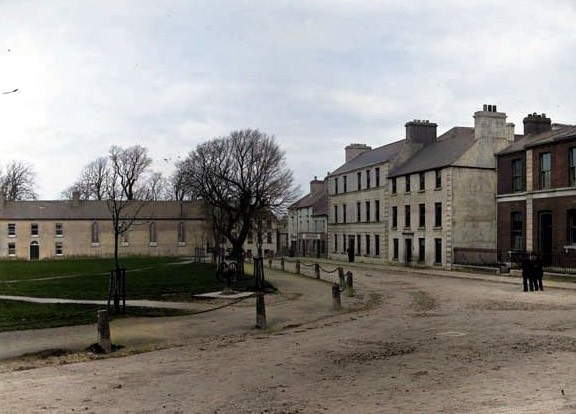
The 1798 Rebellion
General Humbert and the French Forces
In 1798, during the Irish Rebellion against British rule, Castlebar found itself at the center of a pivotal moment in Irish history. On August 22nd, 1798, a French expeditionary force led by General Jean Joseph Amable Humbert landed at Kilcummin Head, near Killala Bay in County Mayo. Humbert, a seasoned military commander, had been dispatched by the French Directory to support the Irish rebels in their fight against the British.
General Humbert’s force, consisting of approximately 1,000 French soldiers and a number of Irish insurgents, began their march towards Castlebar, intending to strike a significant blow against the British forces stationed there. The French troops, well-trained and equipped with modern weapons, quickly advanced through the countryside, gaining support from local Irish rebels along the way.
The Battle of Castlebar and “The Races of Castlebar”
On August 27th, 1798, General Humbert’s Franco-Irish force reached Castlebar, where they encountered a British garrison of approximately 6,000 soldiers under the command of General Gerard Lake. Despite being heavily outnumbered, Humbert’s troops launched a surprise attack on the British positions, catching them off-guard and forcing them into a hasty retreat.
The British retreat, which became known as “The Races of Castlebar,” was a humiliating defeat for the Crown forces. The French and Irish rebels chased the fleeing British soldiers through the streets of Castlebar, inflicting heavy casualties and capturing a significant amount of weapons and supplies. The victory at Castlebar was a major boost to Irish morale and sparked hopes of a wider uprising against British rule.
However, the success at Castlebar was short-lived. General Humbert’s force, now reinforced by Irish volunteers, marched on towards Longford and Westmeath, but they were eventually surrounded and defeated by a much larger British army at the Battle of Ballinamuck on September 8th, 1798. The French troops surrendered, and many of the Irish rebels were captured, tried, and executed in the aftermath of the rebellion.
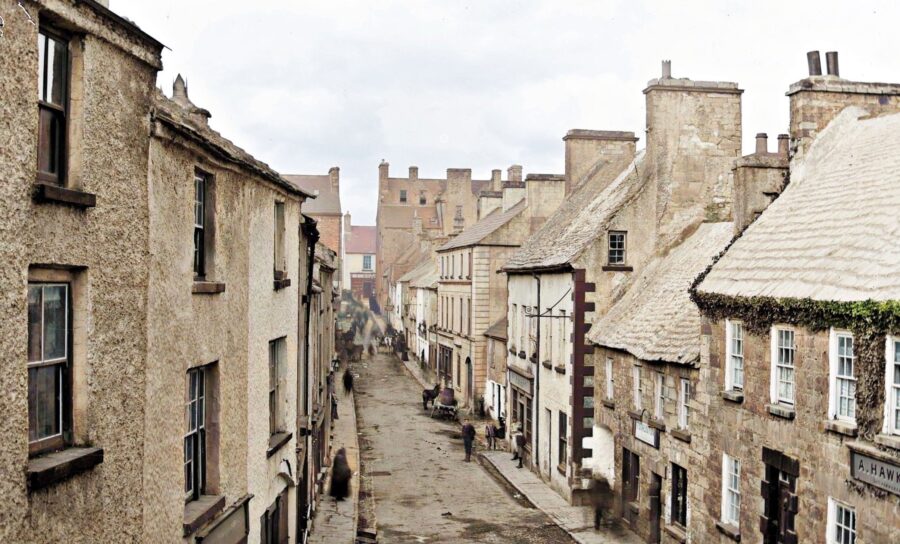
19th Century Developments
The Land League and Daly’s Hotel (1879)
In the late 19th century, Castlebar played a significant role in the Irish Land War, a struggle between tenant farmers and landlords over land rights and ownership. On August 16th, 1879, the Land League of Mayo was founded by Michael Davitt in Daly’s Hotel, located on the Mall in Castlebar. The Land League advocated for the rights of tenant farmers and sought to reform the landlord-tenant system in Ireland. The meeting at Daly’s Hotel marked a crucial moment in the history of the Land War and solidified Castlebar’s place in the fight for tenants’ rights.
The Construction of the Church of the Holy Rosary
The late 19th century also saw the construction of a new Catholic church in Castlebar, the Church of the Holy Rosary. The foundation stone for the church was laid in 1891, and the building was completed in 1901. The church, designed in the Gothic Revival style, features a stunning marble altar donated by Bishop Ludden of Syracuse, New York, who was born in Castlebar. The Church of the Holy Rosary remains an important spiritual and architectural landmark in the town.
The Decline of the Linen Industry
Throughout the 18th and early 19th centuries, Castlebar had a thriving linen industry, with many of the town’s residents involved in the production and trade of linen goods. However, by the mid-19th century, the linen industry began to decline due to a combination of factors, including competition from cheaper cotton imports and the mechanization of textile production. The decline of the linen industry had a significant impact on Castlebar’s economy and led to the closure of many local businesses and the loss of jobs.
The Establishment of New Industries
Despite the decline of the linen industry, Castlebar saw the emergence of new industries in the 19th century. These included:
- Tobacco and Snuff Manufacturing: A tobacco and snuff factory was established in the town, providing employment for local residents.
- Soap and Candle Making: A soap and candle manufactory was set up in Castlebar, contributing to the town’s economic diversification.
- Brewing: A brewery was established in the town, producing beer for local consumption and export.
- Tanning: A tannery was set up in Castlebar, processing animal hides for the production of leather goods.
The establishment of these new industries helped to offset the impact of the declining linen trade and provided new opportunities for employment and economic growth in the town. Despite the challenges faced by Castlebar in the 19th century, the town’s resilience and adaptability helped it to weather the changing economic landscape and set the stage for further development in the 20th century.
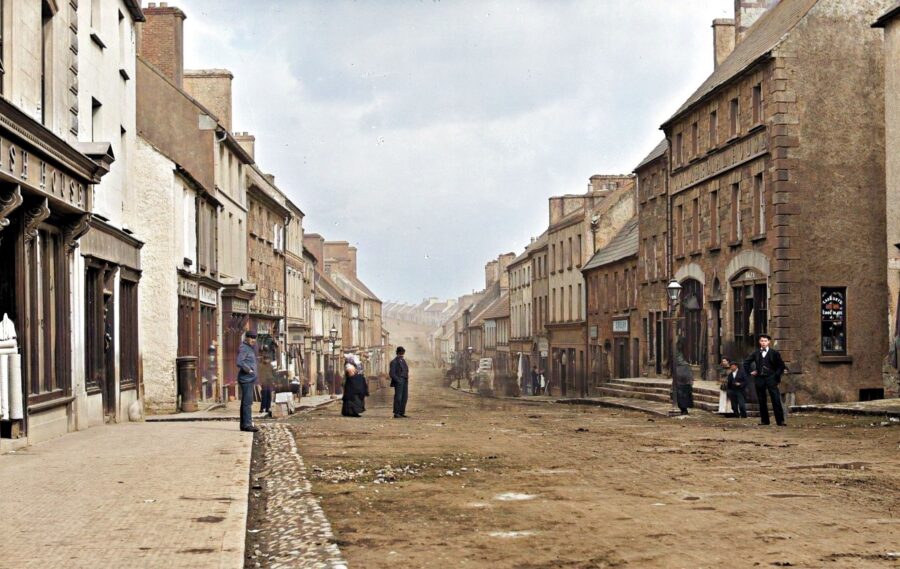
20th Century and Independence
Castlebar as the Prominent Town in County Mayo
As Ireland moved into the 20th century and closer to independence, Castlebar solidified its position as the prominent town in County Mayo. The town’s central location, combined with its administrative and economic importance, made it a natural hub for the region. Castlebar’s status as the county town was further enhanced by the presence of key institutions such as the County Courthouse, the County Council offices, and the Mayo County Library.
The Rise of Culture and Sports
The early 20th century saw a surge in cultural and sporting activities in Castlebar, reflecting the town’s growing prosperity and community spirit. Two notable examples of this trend were the establishment of the Castlebar Boxing Club and the resurgence of the Castlebar Rugby Club.
- Boxing Club: The Castlebar Boxing Club was founded in the early 1900s and quickly became a focal point for the town’s youth. The club produced many talented boxers who competed at regional and national levels, and it played a significant role in promoting the sport in County Mayo.
- Rugby Club: Although rugby had been played in Castlebar since the late 19th century, the Castlebar Rugby Club experienced a renaissance in the early 20th century. The club attracted new members and became more competitive, participating in regional leagues and tournaments.
The growth of these and other sporting and cultural organizations contributed to a sense of community pride and identity in Castlebar, helping to bring people together and foster a shared sense of purpose.
The Hat Factory and Economic Growth
One of the most significant economic developments in Castlebar during the early 20th century was the establishment of the Hat Factory. Founded in the 1920s, the factory became a major employer in the town, providing jobs for hundreds of local residents, particularly women.
The Hat Factory produced high-quality hats for both the domestic and export markets, and its success helped to stimulate economic growth in Castlebar. The factory’s presence also attracted other businesses to the town, including suppliers and service providers, further contributing to the town’s economic development.
The Hat Factory remained a key employer in Castlebar for several decades, and its legacy can still be seen in the town today. The factory building, although no longer used for hat production, stands as a reminder of Castlebar’s industrial heritage and the important role that manufacturing played in the town’s growth and prosperity.
Notable Figures from Castlebar
Louis Brennan (Inventor)
Louis Brennan (1852-1932) was a renowned inventor born in Castlebar. He is best known for his invention of the Brennan Torpedo, a guided missile that was ahead of its time. Brennan’s torpedo, which he developed while working for the British War Office, was a significant advancement in naval warfare technology. He also invented the Brennan Helicopter, a precursor to modern helicopters, and the Brennan Gyro-Monorail, a unique transportation system. Brennan’s inventions earned him international recognition and numerous awards, and he is celebrated as one of Castlebar’s most influential and innovative native sons.
Margaret Burke Sheridan (Soprano)
Margaret Burke Sheridan (1889-1958) was a world-renowned soprano born in Castlebar. She began her musical training at a young age and went on to study in Italy, where she made her operatic debut in 1918. Burke Sheridan became one of the leading sopranos of her generation, performing at prestigious opera houses across Europe and the United States. She was known for her powerful voice, dramatic presence, and versatility, and she excelled in a wide range of roles, from Italian bel canto to German romantic opera. Burke Sheridan’s success helped to put Castlebar on the map as a source of musical talent, and she remains an inspiration to aspiring singers from the town and beyond.
Stephen Garvey (Musician)
Stephen Garvey (1882-1951) was a talented musician, composer, and bandleader born in Castlebar. He began his musical career as a church organist and went on to become one of Ireland’s most prominent musicians of the early 20th century. Garvey composed numerous works for orchestra, brass band, and solo instruments, and he was known for his innovative arrangements and dynamic performances. He led several successful bands, including the Castlebar Town Band and the Garvey Concert Band, which toured extensively throughout Ireland and the United Kingdom. Garvey’s contributions to Irish musical life helped to raise the profile of Castlebar and inspired generations of young musicians in the town.
Modern Castlebar
Current Population and Town Layout
As of the 2016 census, Castlebar had a population of 12,068, making it the largest town in County Mayo. The town has grown significantly in recent decades, with new residential developments and commercial areas expanding the urban footprint. Despite this growth, Castlebar has managed to retain its historic core, with many of the town’s oldest buildings and landmarks still standing in the center of town.
The town is laid out around several main streets, including Main Street, Market Square, and Ellison Street, which are lined with shops, restaurants, and businesses. The Mall, a central park donated by the Bingham family in the 19th century, remains a focal point of the town and a popular gathering place for residents and visitors alike.
Landmarks and Attractions
Castlebar boasts several notable landmarks and attractions that showcase the town’s rich history and cultural heritage. These include:
- The Linenhall Arts Centre: Housed in the historic Linen Hall building, this cultural hub hosts exhibitions, performances, and workshops throughout the year.
- The Mayo Peace Park: Dedicated in 2008, this park honors the memory of all those from County Mayo who died in conflicts around the world.
- The Mayo County Library: Located in a beautiful Victorian building, the library houses an extensive collection of books, periodicals, and local history materials.
- The Museum of Country Life: Situated just outside Castlebar, this branch of the National Museum of Ireland explores the history of rural life in Ireland.
- Christ Church: This historic Church of Ireland building dates back to the 18th century and features stunning stained glass windows and a tranquil churchyard.
In addition to these landmarks, Castlebar is known for its vibrant cultural scene, with numerous festivals, events, and sporting activities taking place throughout the year. The town’s pubs, restaurants, and shops offer a warm welcome to visitors, while the surrounding countryside provides ample opportunities for outdoor recreation and sightseeing.


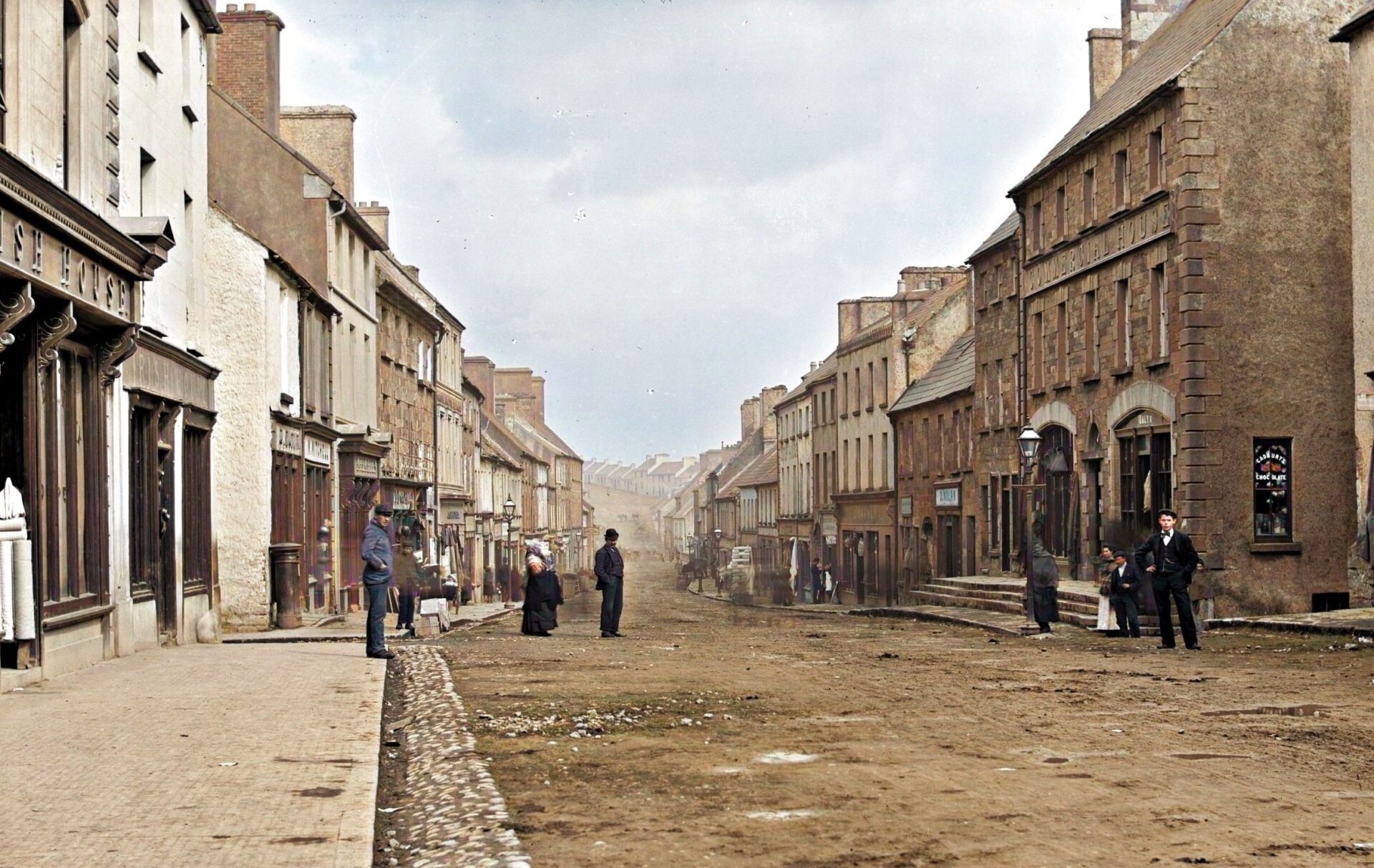
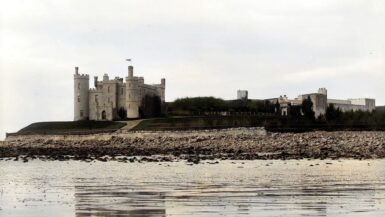
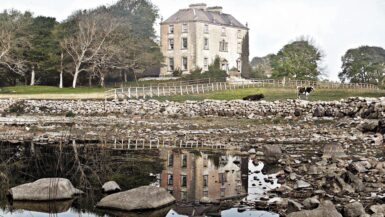
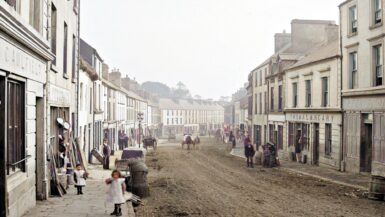
Leave a reply